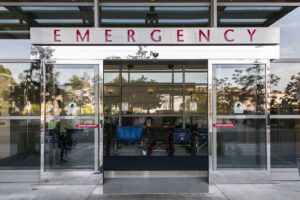The number of freestanding emergency departments (ED) or ambulatory care centers is growing rapidly in the United States. In 2019, the U.S. freestanding ED market size was about $3.3 billion, according to Grandview Research. That market is expected to grow at a compound annual growth rate of 5% to 2027, reaching $5 billion.
Freestanding emergency departments are expanding quickly due to patient demand: With ambulatory centers that are not connected to a full hospital, patients can often access emergency services closer to their homes and with much shorter waiting times compared to traditional hospital emergency rooms. In addition to reducing overcrowding in traditional emergency departments, freestanding EDs may also decrease costs by providing care at a lower reimbursement level than a traditional hospital-based emergency department.
Each state has different regulations governing freestanding emergency centers. In some states, a certificate of need is required before a center can be opened. In some states, a freestanding emergency department must be affiliated with an existing hospital, and in others, there is no such requirement. For hospitals, doctors, business owners and others who have achieved state approval to open a freestanding ED, these three steps are crucial for getting the center up and running effectively.
1 | ENSURE Code compliance.
Compliance with building codes is essential with any new facility, but especially with a freestanding ED. In most cases, these facilities must be compliant with both state and local health department building codes. Because state and local requirements often differ, engineers and architects may need to consult with state and city officials to make sure the building will be compliant.
While it’s easy to assume that freestanding EDs are similar to urgent care centers, the building code requirements typically exceed the requirements for urgent care centers. The requirements often exceed even the code requirements for hospital emergency departments, according to Emergency Physicians Monthly. As a result, it’s important to double-check the requirements for your state and city.
2 | obtain transfer agreements.
A freestanding ED must have partnerships in place in order to succeed. Emergency medical services (EMS) may or may not transport patients to a freestanding center, so ED leaders must work to build relationships and transfer agreements with these providers.
If a freestanding ED is not affiliated with a particular hospital, it will need to work with attorneys to develop a transfer agreement with a nearby hospital. With strong agreements in place with both EMS and hospitals, it will be easy to quickly transport and admit patients who need to be hospitalized after receiving emergency care.
3 | stock your emergency center.
Like any other healthcare facility, a freestanding ambulatory center must be equipped with all the right supplies and equipment to effectively provide patient care. And those supplies must be stored in an organized, convenient way so that providers can quickly access the items they need to handle patient emergencies efficiently.
Choosing the right types of storage can make a difference in the emergency room’s response times and patient satisfaction rates. For example, your freestanding ED may need a variety of carts, such as general procedure carts, crash carts, phlebotomy carts, and procedure and trauma carts. With the right carts in place, providers can take with them all necessary supplies to care for various patients at their bedside.
Aside from movable storage, it’s also important to equip patient rooms with needed supplies and equipment with built-in storage solutions. That may include bin cabinets, bag dispensers and bulk dispensers. When emergency providers encounter patients, they may also need items such as digital scales, exam stools, foot stools, glove dispensers and infection prevention stations in order to adequately and quickly respond to patient needs.
The right types of storage can help prevent the spread of infection and disease, while also allowing providers to offer the care patients need, right when they need it, without having to search for necessary supplies and equipment.
At Storage Systems Unlimited, we have helped many free-standing emergency departments get up and running. We provide all storage-related products for the emergency department with a choice of multiple manufacturers. We also offer preferred pricing, planning, design, installation and project management for healthcare organization and storage systems. Contact us at 1-888-614-0004 or visit storagesystemsul.com to learn more or request a quote.

